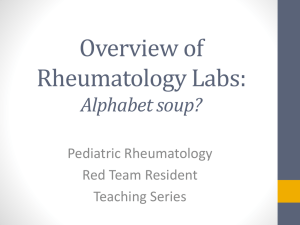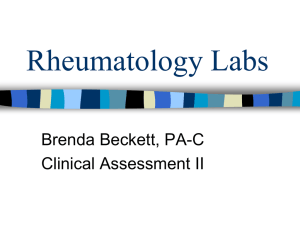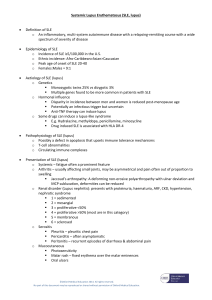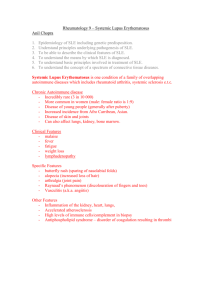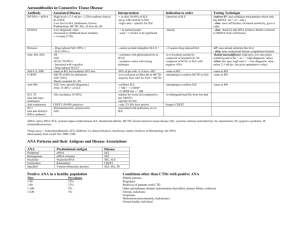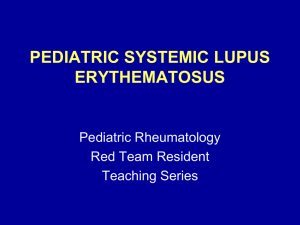Types of Antibodies Present in Systemic Lupus
advertisement
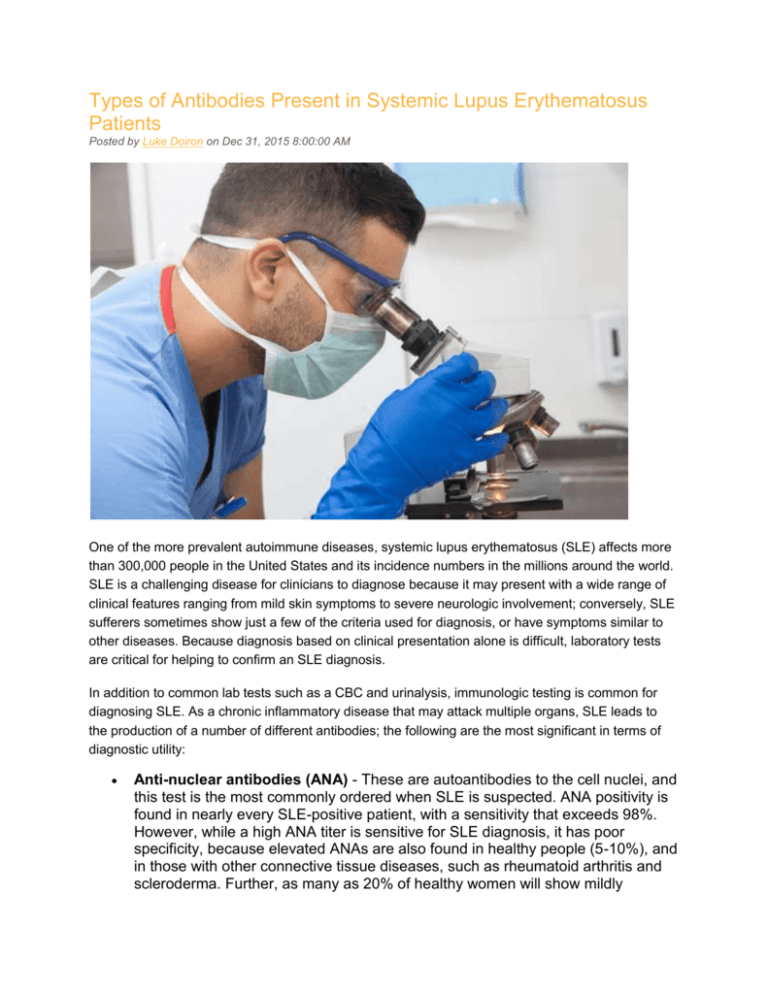
Types of Antibodies Present in Systemic Lupus Erythematosus Patients Posted by Luke Doiron on Dec 31, 2015 8:00:00 AM One of the more prevalent autoimmune diseases, systemic lupus erythematosus (SLE) affects more than 300,000 people in the United States and its incidence numbers in the millions around the world. SLE is a challenging disease for clinicians to diagnose because it may present with a wide range of clinical features ranging from mild skin symptoms to severe neurologic involvement; conversely, SLE sufferers sometimes show just a few of the criteria used for diagnosis, or have symptoms similar to other diseases. Because diagnosis based on clinical presentation alone is difficult, laboratory tests are critical for helping to confirm an SLE diagnosis. In addition to common lab tests such as a CBC and urinalysis, immunologic testing is common for diagnosing SLE. As a chronic inflammatory disease that may attack multiple organs, SLE leads to the production of a number of different antibodies; the following are the most significant in terms of diagnostic utility: Anti-nuclear antibodies (ANA) - These are autoantibodies to the cell nuclei, and this test is the most commonly ordered when SLE is suspected. ANA positivity is found in nearly every SLE-positive patient, with a sensitivity that exceeds 98%. However, while a high ANA titer is sensitive for SLE diagnosis, it has poor specificity, because elevated ANAs are also found in healthy people (5-10%), and in those with other connective tissue diseases, such as rheumatoid arthritis and scleroderma. Further, as many as 20% of healthy women will show mildly elevated ANA levels while never developing clinical symptoms. For these reasons, researchers have found other antibodies that help in SLE diagnosis. Anti-dsDNA - An elevated level of anti-double-stranded DNA antibodies is a suspicious result when determining whether SLE is present, because these antibodies are very specific for SLE (less than 1% of healthy people have this antibody). Importantly, the presence of anti-dsDNA antibodies may point to more serious forms of lupus, such as that affecting the kidneys (lupus nephritis). However, anti-dsDNA is only found in 30 to 40% of people with SLE, because it will not show up in the blood unless the disease is active. Anti-Smith - This antibody to Sm, a ribonucleoprotein found in the cell nucleus, is also highly specific for SLE, with an incidence in healthy people of less than 1%. As with anti-dsDNA, anti-Sm has low sensitivity, showing up in just 20 to 30% of SLE sufferers. Anti-Ro/SSA and anti-LA/SSB - These are autoantibodies directed against the Ro/SSA and La/SSB autoantigens. They were first identified in people with Sjögren’s syndrome and SLE, and additional research shows their presence in other autoimmune diseases, such as rheumatoid arthritis and systemic sclerosis. Between 30 and 40% of SLE patients have these antibodies, but they are more commonly found in Sjögrens syndrome, and so their presence is not definitive for SLE. Anti-U1 RNP - Antibodies against uridine-rich (U1) small nuclear RNP are often found (together with anti-Sm antibodies), in SLE patients. Less than 1% of healthy individuals will have this antibody, as compared to about 25% of SLE sufferers, making it highly specific but not highly sensitive. This antibody is also found in rheumatic diseases such as RA and systemic sclerosis. Antiribosomal P protein - These antibodies, as many others described above, have a high specificity for SLE, but low sensitivity, and also provide little information about which organ systems might be involved with an SLE diagnosis. Anti-CCP and RF - If a high clinical suspicion of SLE exists in patients who have arthritis, labs often also evaluate whether the person has positive antibodies to rheumatoid factor (RF) and cyclic citrullinated peptides (CCP), as their presence helps exclude/include RA as a diagnosis.


